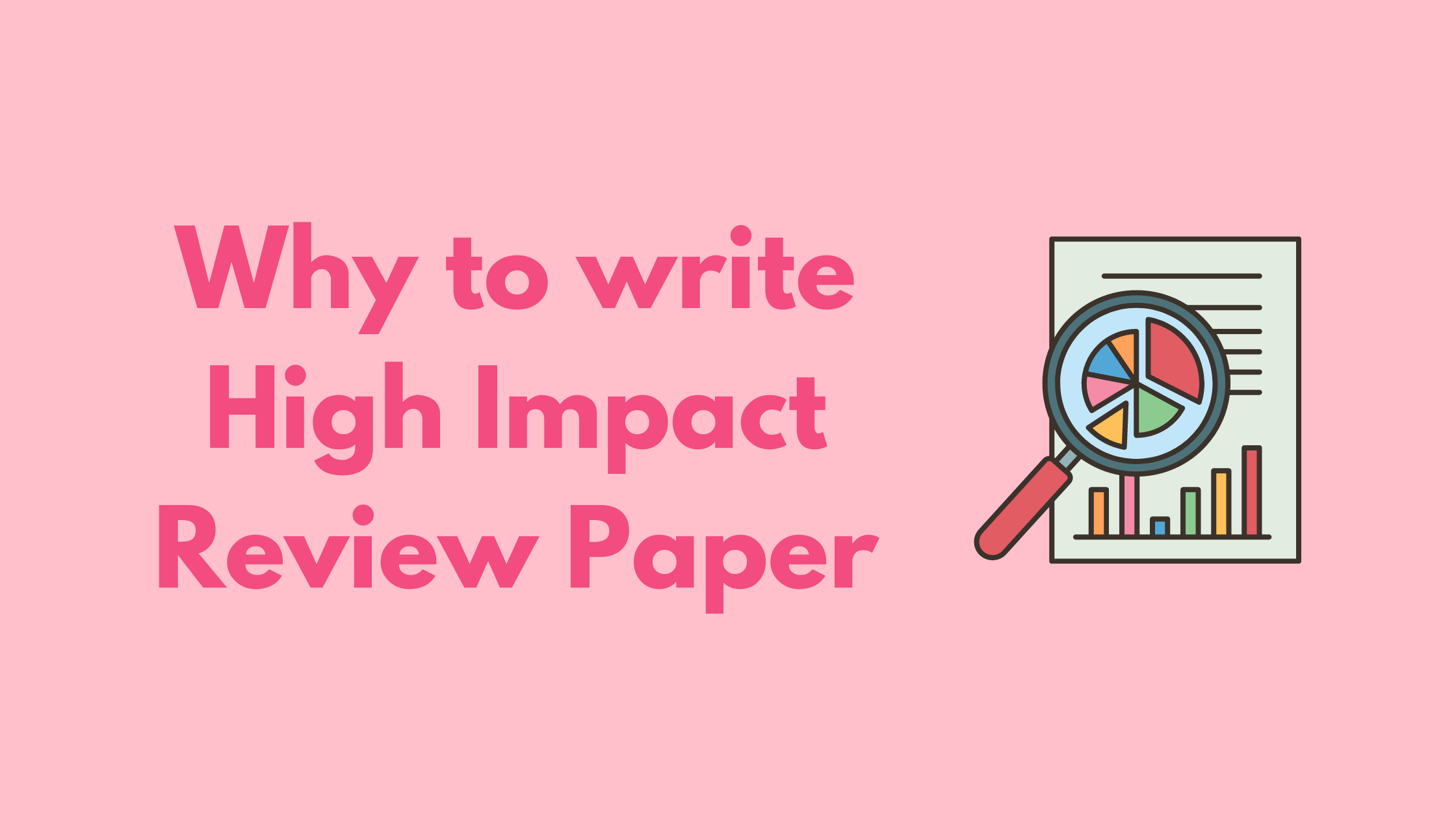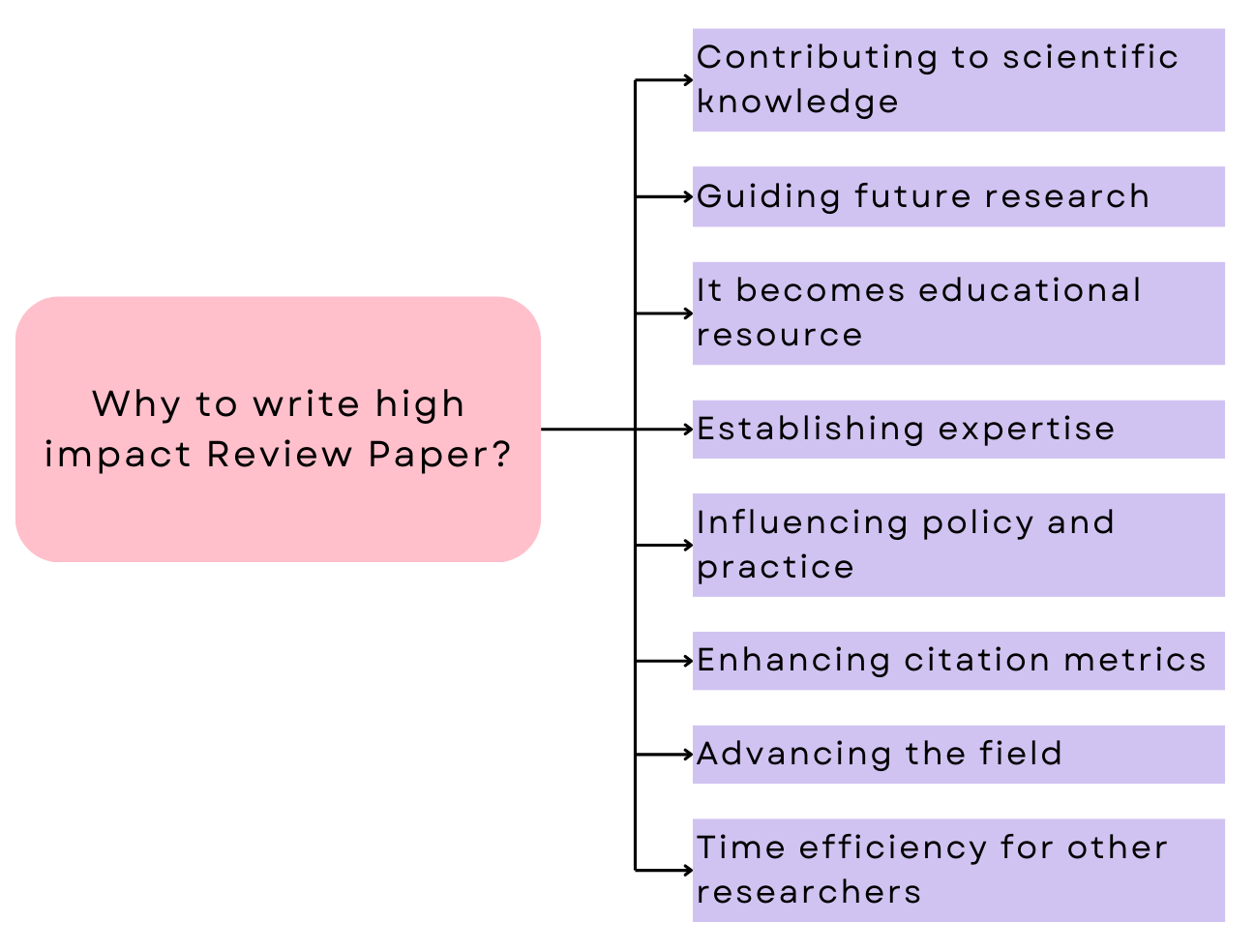Why to write high impact Review Paper?
 Jyoti Maurya
Jyoti Maurya
Writing a high-impact review paper has several benefits for both the author and the broader scientific community. Here are key reasons to write a high-impact review paper:

1. Contributing to Scientific Knowledge
Synthesize Information: A review paper synthesizes a vast amount of information on a particular topic, making it easier for researchers to grasp the current state of knowledge.
Identify Trends: It helps in identifying emerging trends, advancements, and significant breakthroughs in a specific field.
2. Guiding Future Research
Highlight Gaps: A high-impact review paper highlights gaps in existing research, directing future investigations towards these unexplored areas.
Propose Directions: It can propose new research directions and methodologies, encouraging innovative approaches to problem-solving.
3. Educational Resource
For Researchers: It serves as a comprehensive resource for researchers, providing an in-depth understanding of a topic without having to read numerous individual papers.
For Students: Students and newcomers to the field can use it as an educational tool to learn about the foundational and current research trends.
4. Establishing Expertise
Author’s Credibility: Writing a high-impact review paper establishes the author as an expert in the field, enhancing their reputation and visibility.
Networking Opportunities: It can lead to networking opportunities with other researchers, collaborations, and invitations to conferences or special issues.
5. Influencing Policy and Practice
Informed Decision-Making: Review papers can influence policymakers by providing a consolidated source of scientific evidence, aiding in informed decision-making.
Practical Applications: In fields like healthcare, engineering, and technology, review papers can inform best practices and guide practical applications.
6. Enhancing Citation Metrics
High Citations: High-impact review papers often receive more citations than regular research papers because they are frequently used as reference points by other researchers.
Impact Factor: This can contribute to the author’s citation metrics and the journal’s impact factor, benefiting both the author and the publication.
7. Advancing the Field
State-of-the-Art Overview: By providing a state-of-the-art overview, review papers push the field forward, making complex topics more accessible and fostering a shared understanding.
Integrating Disciplines: They can integrate knowledge across different disciplines, encouraging interdisciplinary research and innovations.
8. Time Efficiency for Researchers
Comprehensive Resource: Instead of reading numerous individual studies, researchers can refer to a single comprehensive review, saving time and effort.
Up-to-Date Information: Review papers compile the most recent findings, ensuring researchers are up-to-date with the latest developments in the field.
Subscribe to my newsletter
Read articles from Jyoti Maurya directly inside your inbox. Subscribe to the newsletter, and don't miss out.
Written by

Jyoti Maurya
Jyoti Maurya
I create cross platform mobile apps with AI functionalities. Currently a PhD Scholar at Indira Gandhi Delhi Technical University for Women, Delhi. M.Tech in Artificial Intelligence (AI).